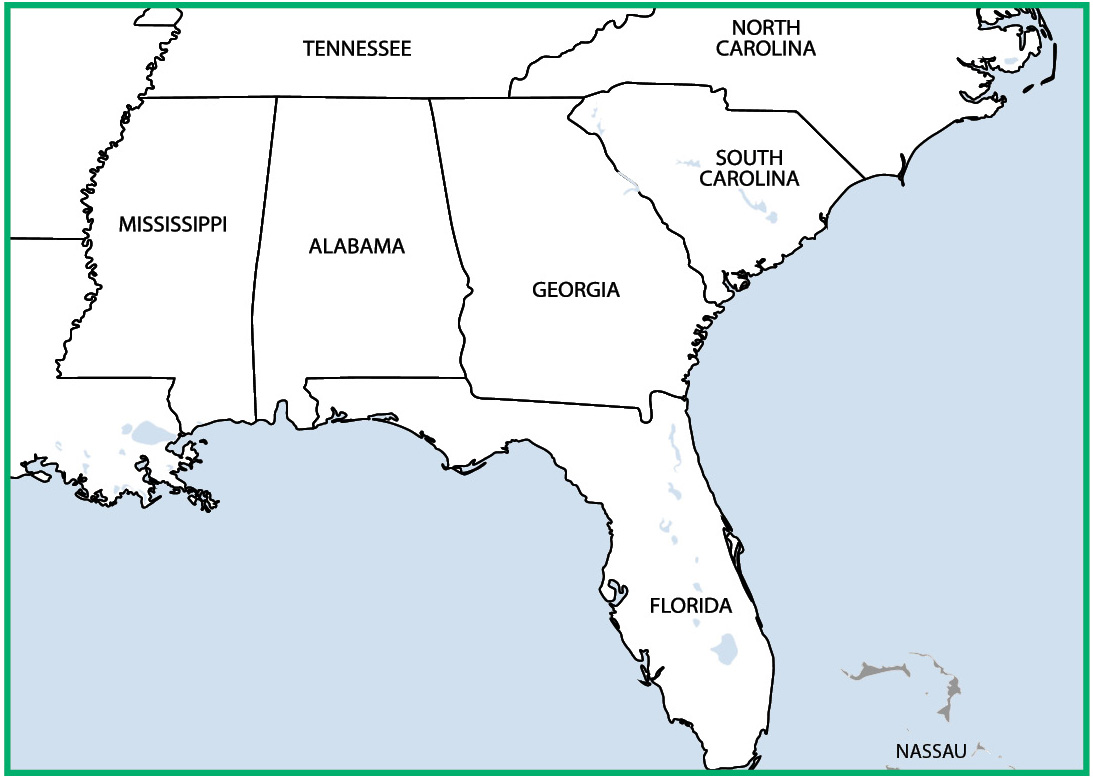Southeastern United States
The next deployment of the third ARM Mobile Facility will be to Alabama's Bankhead National Forest.
The Atmospheric Radiation Measurement (ARM) user facility will soon move its third mobile facility (AMF3) to the Southeastern United States.
Previously, AMF3 operated at Oliktok Point, Alaska, from September 2013 to June 2021.
To maximize the scientific value of the new site, the U.S. Department of Energy’s Biological and Environmental Research (DOE BER) program selected a site science team to help guide the move of AMF3.
Brookhaven National Laboratory in New York leads the AMF3 site science team. Supported by ARM and DOE’s Atmospheric System Research (ASR), the multi-institutional team is responsible for developing a science plan and initial research project for the SE U.S. deployment.
With feedback from the scientific community in mind, the site science team is helping to pinpoint additional instrument sites and collaborators in the region. The team aims to facilitate and enable research that will be performed with the AMF3 data.
Science Drivers
A mobile facility workshop in August 2018 identified the Southeast as a priority region of interest for further study by ARM. The Southeast is a region with abundant atmospheric convection, yet the land surface, boundary layer, vegetation, and aerosol properties are markedly different from those seen at ARM’s fixed observatory in Oklahoma, allowing opportunities to explore new research questions.
With the SE U.S. deployment, the AMF3 site science team proposes to improve process understanding and model representations of aerosol, cloud, and land-atmosphere interactions, together with key cross-coupling of those areas to explore land-atmosphere feedbacks and aerosol-cloud interactions.
Deployment Timeline

The following is the current planned timeline for the AMF3 deployment to the Southeast. Note that the timeline is subject to change by DOE/BER or ARM based on budgetary, logistical, or programmatic reasons.
The AMF3 SE U.S. site is currently expected to be operational for five years. The site is expected to be installed in a phased approach with the central facility and core instrumentation operational first, and then distributed sites and/or additional advanced instrumentation installed at later dates.
Past and anticipated AMF3 SE U.S. timelines:
- March 2021 – short list of potential new AMF3 deployment locations in the Southeastern United States identified
- March–September 2021 – ARM analyzes logistics of deployment short list; determines site location including potential spatially distributed sites
- September 2021–September 2022 – ARM finalizes site approvals, leases, contracts
- September 2022–September 2023 – AMF3 SE U.S. central facility site preparation and core instrument installation
- September 2023 – AMF3 SE U.S. site operational
- September 2023–September 2024 – installation of supplemental sites (Phase 2)
- September 2024–September 2025 – deployment of additional instruments as necessary (Phase 3)
AMF3 Oliktok Point timelines:
- June 2021 – end of AMF3 operations at Oliktok Point
- June–September 2021 – pack-up and removal of all ARM instrumentation from Oliktok Point site.
Keep up with the Atmospheric Observer
Updates on ARM news, events, and opportunities delivered to your inbox
ARM User Profile
ARM welcomes users from all institutions and nations. A free ARM user account is needed to access ARM data.


















